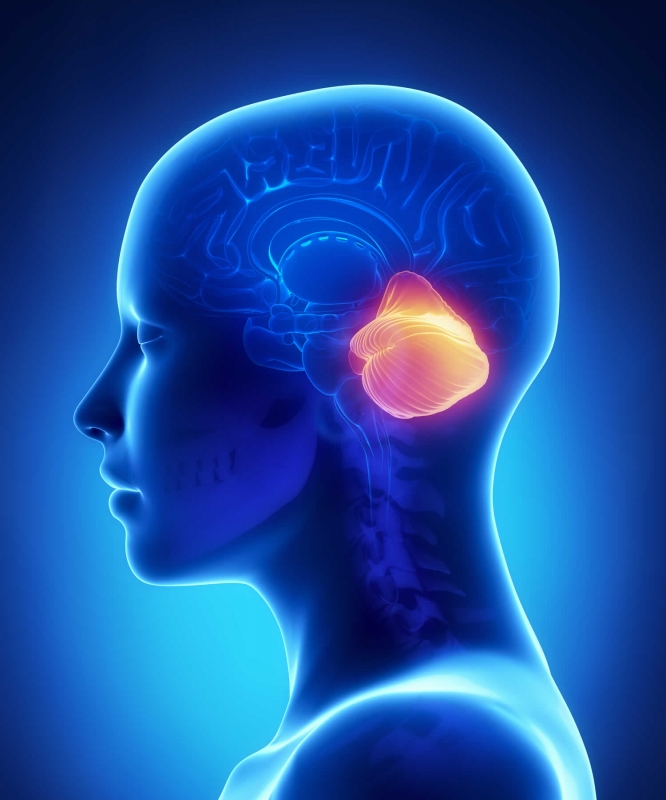
Cerebellar ataxia is a disorder which occurs when the cerebellum becomes inflamed or damaged. The area of the brain that is responsible for controlling gait and muscle coordination is known as the cerebellum. The term ataxia is used to refer to the lack of fine control of voluntary movements. It is used with the word ‘acute’ to specify how quickly it comes. It is also known as cerebellitis.. For best Cerebellar Ataxia treatment in Gurgaon consult Dr. Rajesh Pal who is qualified and experienced physiotherapist at PAL Physiotherapy center.
Causes
The cerebellum can get injured by the viruses and other diseases that affect the nervous system. These include:
- Chickenpox
- Measles
- Mumps
- Hepatitis A
- Infections caused by the Epstein-Barr and Coxsackie viruses
Other causes of cerebellar ataxia include:
- Bleeding in the cerebellum
- Exposure to mercury, lead, and other toxins
- Bacterial infections, such as Lyme disease
- Head trauma
- Deficiencies of certain vitamins, such as B-12, B-1 (thiamine), and E
Symptoms
- Impaired coordination in the torso or arms and legs
- Frequent stumbling
- An unsteady gait
- Uncontrolled or repetitive eye movements
- Trouble eating and performing other fine motor tasks
- Slurred speech
- Vocal changes
- Headaches
- Dizziness
Treatment
The postural and balance disorders in cerebellar ataxia were not treatable. However, after recent studies, it is being said that the use of rehabilitation can help relieve postural disorders in patients with cerebellar ataxia. The rehabilitation is effective in improving the postural capacities of patients with cerebellar ataxia – especially in patients with degenerative ataxia or multiple sclerosis. Intensive rehabilitation programs which focus on balance and coordination exercises are recommended. They include techniques such as virtual reality, biofeedback, treadmill exercises, and torso weighting.
There are various levels of ataxia. Those patients with progressive ataxia are referred to consult a physiotherapist or neuro-physiotherapist at an early stage of the disease by establishing various strategies for maintaining function (balance, upper limb coordination, posture).
The best treatment for Cerebellar Ataxia in Gurgaon is Physiotherapy from PAL Physiotherapy clinic. Medications are occasionally preferred to improve coordination along with physical therapy. The use of Physiotherapy is said to be valuable for mobility and avoiding other problems. The physiotherapy is important:
- It is used to improve balance and increase the independence of the patient
- It concentrates on using techniques focusing on balance, posture and increasing coordination.
- As mobility becomes impaired a physiotherapist guides in providing advice on walking aids or wheelchairs.
Therapeutic goals focus on improving balance and posture against outside stimuli, enhance the joint stabilization, and develop independence of functional gait.
Therapy for Balance
Lack of balance is one of the main problems faced by patients suffering from cerebellar ataxia. Physical therapy is used to improve balance.
- Mat activities such as moving onto the forearms from lying face down; crawling; and moving onto the knees and into a sitting position help to stabilize the trunk and proximal muscles.
- Gait training works as an excellent indicator of stabilization and balance.
Video-Game Based Coordinative Training
- This training is used for children with ataxia. It focuses on intensive coordination training which makes use of whole-body controlled video games.
- In children who could walk without support, the use of this technique as an 8-week training programme resulted in improvement. It is best to perform such techniques under the supervision of a physiotherapist in order to ensure the correct movements and safety.
Treadmill Training:
- In people suffering from ataxia due to brain injury, this method is commonly used.
- Treadmill training is effective keeping in mind the intensity and duration of training.
Visually Guided Stepping
- This is a simple strategy, which is task-specific and short-lived in nature. It is promising and relatively quick and easy to apply in case of a functional setting.
- The oculomotor and locomotor performance improves by following eye movement rehearsal in patients having mild cerebellar degeneration.
- This activity involves rehearsal of intended steps through eye movement alone which further improve the performance and safety.
Walking Aids
- The control of postures by making use of somatosensory cues from the fingertips is beneficial for many patients.
- By making use of light touch contact or a walking aid the balance can provide a powerful reference orientation.
- The use of Nordic poles helps encourage light touch contact which is the most preferred way for an individual with ataxia.
- Walking aids help in compromising the ability to respond to balance disturbances. This is done by impeding lateral compensatory stepping and thus affects safety.
Lycra Garments
- By making use of lycra, mixed results of improvement in the postural sway, walking effort and speed in adults has taken place.
- Thus it can be amongst the techniques which the physiotherapist may recommend the patients at a later or early stage.
Biofeedback For Balance and Gait
- The use of some forms of biofeedback has turned out to be beneficial.
- Improvements in postural sway in patients with cerebellar ataxia can be made by the biofeedback of head position.
- It is delivered by using a tongue-placed electro-tactile system with eyes closed.

